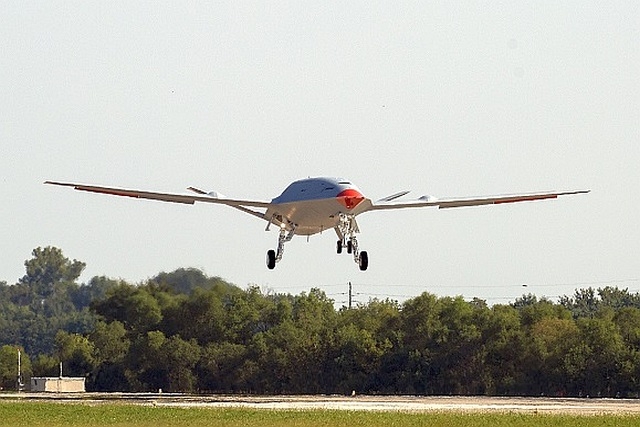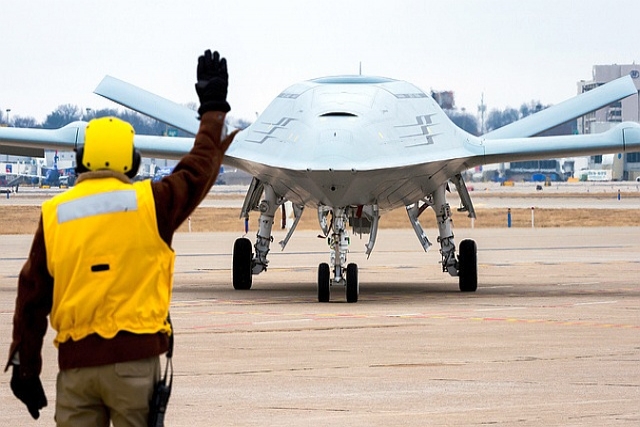Boeing Marks First Flight of MQ-25 Unmanned Refueler Aircraft

Boeing and the United States Navy (USN) completed the first test flight of the MQ-25 unmanned aerial refueler that is meant to refuel fighter jets in mid-air.
The MQ-25 test asset, known as T1, completed the autonomous two-hour flight under the direction of Boeing test pilots operating from a ground control station at MidAmerica St. Louis Airport in Mascoutah, Ill., where the test program is based.
The aircraft completed an autonomous taxi and takeoff and then flew a pre-determined route to validate the aircraft’s basic flight functions and operations with the ground control station.
The Boeing-owned test asset is a predecessor to the engineering development model (EDM) aircraft and is being used for early learning and discovery to meet the goals of the U.S. Navy’s accelerated acquisition program. Boeing will produce four EDM MQ-25 air vehicles for the U.S. Navy under an $805 million contract awarded in August 2018.
The MQ-25 will provide the Navy with a much-needed carrier-based unmanned aerial refueling capability. It will allow for better use of the combat strike fighters currently performing the tanking role and will extend the range of the carrier air wing.

“Today’s flight is an exciting and significant milestone for our program and the Navy,” said the Navy’s Unmanned Carrier Aviation (PMA-268) Program Manager Capt. Chad Reed. “The flight of this test asset two years before our first MQ-25 arrives represents the first big step in a series of early learning opportunities that are helping us progress toward delivery of a game-changing capability for the carrier air wing and strike group commanders.”
T1 received its experimental airworthiness certificate from the FAA in September, verifying that the air vehicle meets the agency’s requirements for safe flight. Testing will continue with T1 to further early learning and discovery that advances major systems and software development.

The USN has planned to buy 72 Stingrays with a total cost of about $13 billion as part of a plan to alleviate the refueling burden on its existing fleet of F/A-18F Super Hornets.









